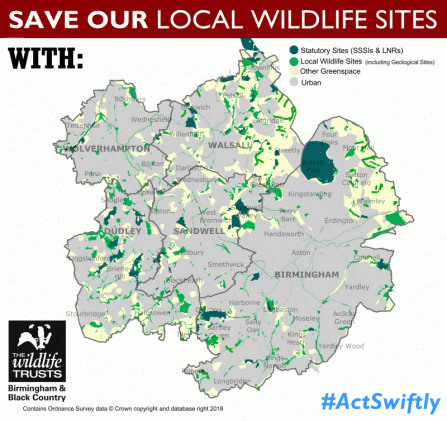
Credit: @WTBBC
Proposed changes to the National Planning Policy Framework (NPPF) are putting our local wildlife sites at risk of being lost to new developments.
The National Planning Policy Framework (NPPF) is the guide that local planners use to make decisions about planning applications.
It is being changed to allow decisions on developments to be made more quickly, but the proposed changes could also have a devastating impact on the quality of the environment.
The new NPPF guidance the government is consulting on no longer mentions Local Wildlife Sites (LWS) - which puts them at risk of future development.
What is a Local Wildlife Site (LWS) and why are they important?
Join us
Local Wildlife Sites are areas which have been designated for their high nature conservation value.
The government itself recognises that Local Wildlife Sites ‘make an important contribution to ecological networks’.
Their selection is overseen by a partnership of local experts using robust, scientifically-determined criteria which consider the most important, distinctive and threatened species and habitats within a national, regional and local context.
Unlike legally protected sites (for example Sites of Special Scientific Interest and Special Areas of Conservation) where a representative sample of sites that meet national standards are designated, LWS systems are comprehensive and select all sites that meet the criteria. As a result, some LWS are of SSSI quality and together with the statutorily protected sites they contain most of the country’s remaining high quality natural habitat and threatened species. They also include many publicly accessible greenspaces and provide opportunities for people to come into contact with nature and wild spaces.
Over the past forty years we have been working to identify all sites of local nature conservation importance in our area. There are 586 LWS across Birmingham and the Black Country covering 4,778 hectares of land. These form a network of natural habitats across our region that is essential to protect our wildlife in the long-term.
These sites are not just important for wildlife, they are important for people who live and work nearby. These are often the green spaces that people use every day: as part of their daily journey to work, to take their children to explore, to walk their dogs, to go for a run or walk, to spend their lunch break.
In Birmingham and the Black Country we have just 21 legally protected nature conservation sites. These protect only a tiny proportion of the wildlife in Birmingham and the Black Country and for a long time it has been recognised that, whilst they are important, these sites are not sufficient to truly protect biodiversity.
Local Wildlife Sites are fundamental in protecting Britain’s wildlife but the only protection they receive is through the planning system. If national planning guidelines no longer recognise them, then there is a very significant risk that we will lose them.
